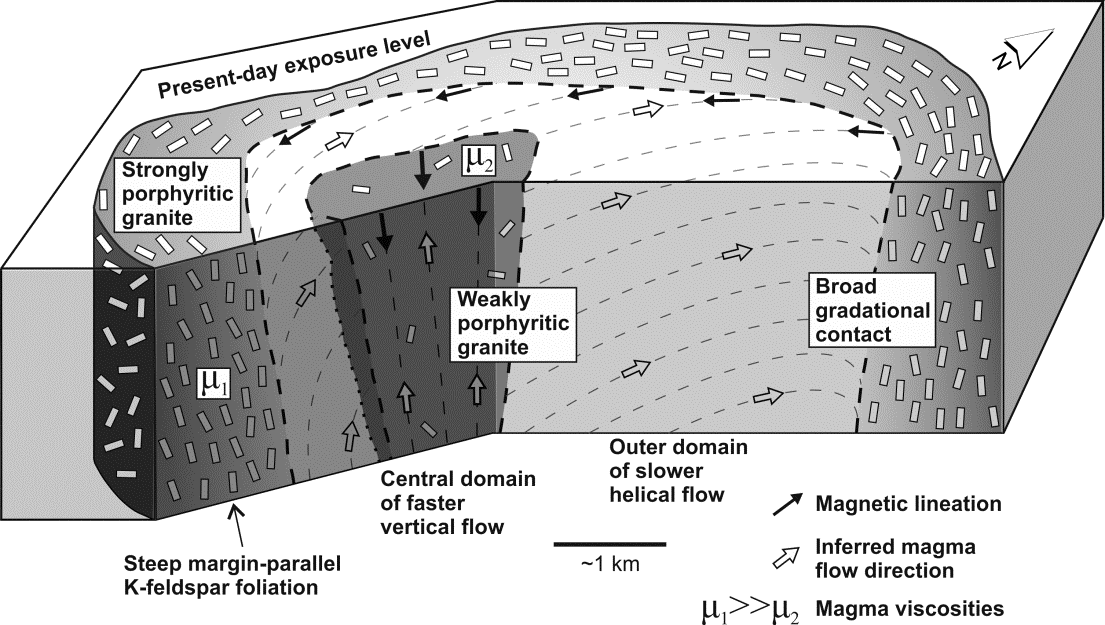Stonemasonry in the Říčany Region – Žernovka Quarry, Part 3

An interesting feature of the Žernovka Quarry Říčany Pluton is that it is reverse-zonal. In most concentric zonal plutons solidifying homogeneously from the edges to the centre the more fractionated products of magma crystallization (i.e. richer in SiO2 and incompatible elements, and without compatible elements) can be found in the centre of the intrusion. However, the Říčany Pluton has been formed the other way round – it shows a decrease in SiO2 and Rb, and an increase in Al2O3, K2O, Na2O, CaO, Ba, Sr, Zr, Th, Ti, and P towards the centre. This presumably reflects the processes of placement from a hypothetical deeper magma chamber that showed a horizontal stratification due to fractional crystallization and accumulation of predominantly K-feldspar. Gravimetric data indicate that the Říčany granite plug can be traced more than 14 km below the surface, where it merges with a large negative gravimetric anomaly extending all the way to Kutná Hora, and is interpreted as a signal of a hypothetical Říčany-Kutná Hora batolite. The current petrogenetic model of the Říčany Pluton presupposes a partial melting of metasediments (metadrob), fractional crystallization of granitic magma, and a thermal reactivation of potassium feldspar cumulates by injections of basic melts. The resulting magma then intruded into higher crust layers.
Another curiosity is a supposed mechanism of the placement of the Říčany Pluton from a deeper magma chamber. A new model of a spiral (helical) flow through a vertical cylindrical canal has been proposed on the basis of a structural analysis and an analysis of the anisotropy of magmatic susceptibility. The canal then presumably solidified to form the present-day Říčany Pluton.

Southeast of Žernovka Quarry on Doubecká Street we come across board no. 7 of the Nature Trail Mukařov – Žernovka. The text taken over from the local chronicle describes the stonemason’s hard life and work. The name of the place itself suggests (žernov – millstone) that it was a home to people who made millstones, and who broke and worked stones in general. In every family at least one family member was a stonemason. Although they worked around 7 hours a day in winter and up to 9 hours a day in summer and often suffered from silicosis, the stonemasons lived to a quite old age – up to 70. The chronicle also states that “[i]n quarries accidents often happen when blasting stone. Before the war the masons used to go to Saxony for better earnings. Despite their hard life, stonemasons like to make merry, and they like to sing while working. However, drinking is a bad habit…”
For World of Stone provided by authors:
Barbora Dudíková Schulmannová, Vojtěch Janoušek, Tomáš Navrátil,
Václav Rybařík and Pavel Vlašímský
